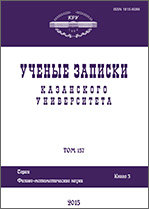|
|
Uchenye Zapiski Kazanskogo Universiteta. Seriya Fiziko-Matematicheskie Nauki, 2018, Volume 160, Book 2, Pages 300–308
(Mi uzku1455)
|
 |
|
 |
This article is cited in 1 scientific paper (total in 1 paper)
Alignment of vector fields on manifolds via contraction mappings
O. N. Kachana, Yu. A. Yanovichabc, E. N. Abramovb
a Skolkovo Institute of Science and Technology, Moscow, 143026 Russia
b National Research University Higher School of Economics, Moscow, 101000 Russia
c Kharkevich Institute for Information Transmission Problems,
Russian Academy of Sciences, Moscow, 127051 Russia
Abstract:
According to the manifold hypothesis, high-dimensional data can be
viewed and meaningfully represented as a lower-dimensional manifold
embedded in a higher dimensional feature space. Manifold learning is
a part of machine learning where an intrinsic data representation is
uncovered based on the manifold hypothesis.
Many manifold learning algorithms were developed. The one called
Grassmann & Stiefel eigenmaps (GSE) has been considered in the
paper. One of the GSE subproblems is tangent space alignment. The
original solution to this problem has been formulated as a
generalized eigenvalue problem. In this formulation, it is plagued
with numerical instability, resulting in suboptimal solutions to the
subproblem and manifold reconstruction problem in general.
We have proposed an iterative algorithm to directly solve the
tangent spaces alignment problem. As a result, we have obtained a
significant gain in algorithm efficiency and time complexity. We
have compared the performance of our method on various model data
sets to show that our solution is on par with the approach to vector
fields alignment formulated as an optimization on the Stiefel group.
Keywords:
manifold learning, dimensionality reduction, numerical optimization, vector field estimation.
Received: 11.10.2017
Citation:
O. N. Kachan, Yu. A. Yanovich, E. N. Abramov, “Alignment of vector fields on manifolds via contraction mappings”, Uchenye Zapiski Kazanskogo Universiteta. Seriya Fiziko-Matematicheskie Nauki, 160, no. 2, Kazan University, Kazan, 2018, 300–308
Linking options:
https://www.mathnet.ru/eng/uzku1455 https://www.mathnet.ru/eng/uzku/v160/i2/p300
|

| Statistics & downloads: |
| Abstract page: | 271 | | Full-text PDF : | 136 | | References: | 39 |
|




 Contact us:
Contact us: Terms of Use
Terms of Use
 Registration to the website
Registration to the website Logotypes
Logotypes








 Citation in format
Citation in format 
